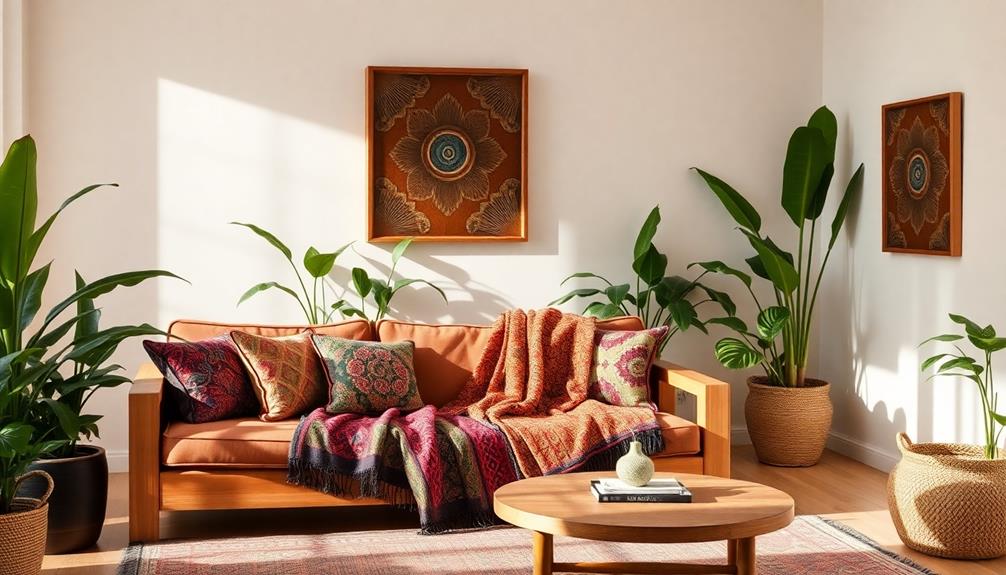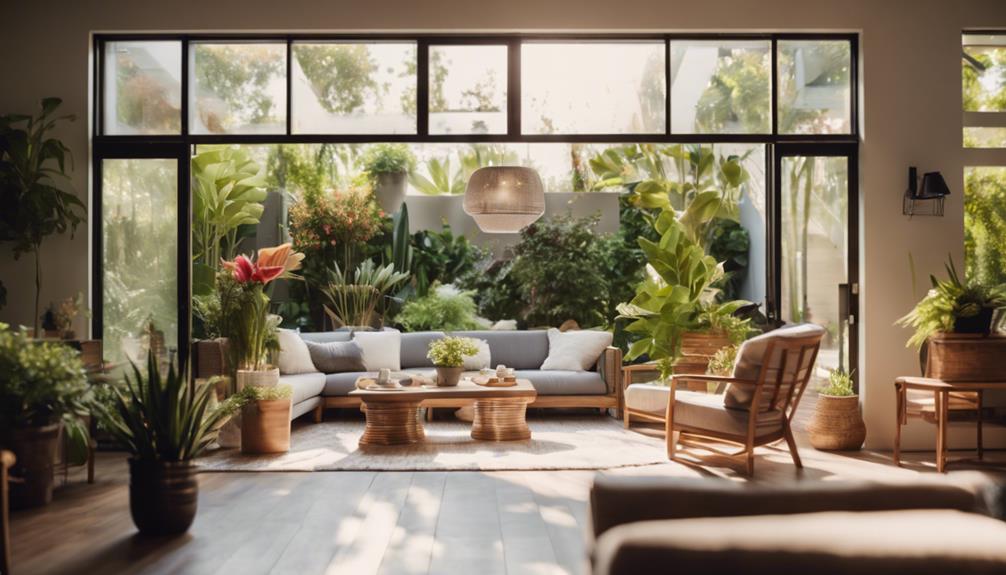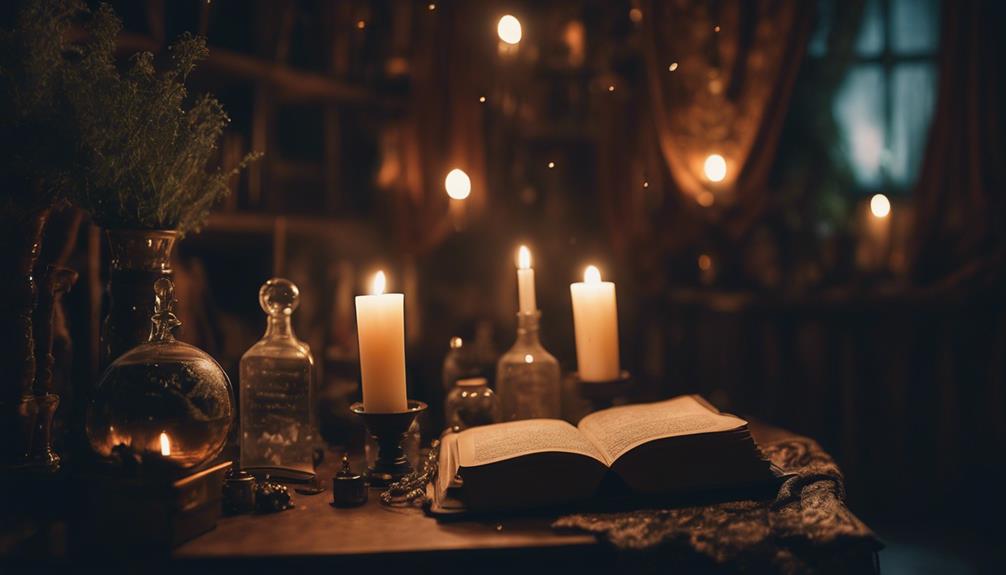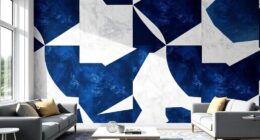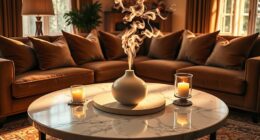Batik patterns are taking over modern interior design because they blend tradition with contemporary aesthetics. You'll find these intricate designs enrich your space with cultural significance and unique textures. From vibrant curtains to stunning wall art, batik adds a personalized touch that sparks conversation. The sustainable craftsmanship aligns perfectly with eco-conscious values, making it appealing to those who cherish authenticity in design. Plus, batik motifs like Parang and Kawung convey powerful stories and meanings. If you're curious about how to incorporate these enchanting patterns into your home, there's much more to explore.
Key Takeaways
- Batik patterns are rich in cultural significance, symbolizing power and harmony, enhancing the narrative in modern interior design.
- The unique textural elements of batik add visual appeal and depth to spaces, making them dynamic and engaging.
- Sustainable craftsmanship in batik production aligns with eco-conscious values, appealing to environmentally aware consumers.
- Versatility allows batik to complement various design styles, from bohemian to minimalist, making it adaptable for diverse decor elements.
- The rising appreciation for artisanal crafts supports local artisans, ensuring the continued relevance and uniqueness of batik in modern interiors.
Origins of Batik Patterns
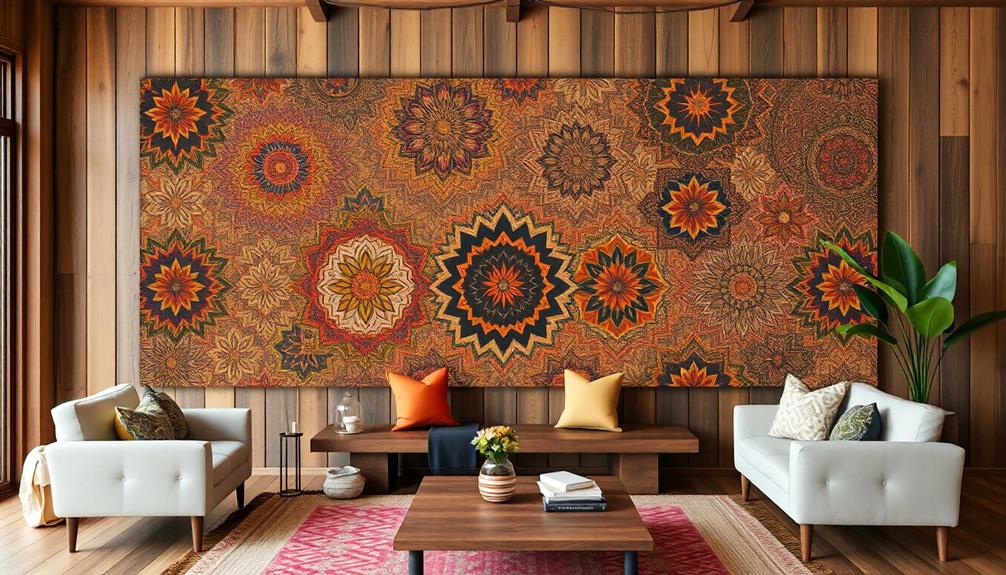
Batik patterns have captivated people for centuries, tracing their roots back to Indonesia, specifically Java, over 2000 years ago. This ancient textile tradition employs a technique known as wax-resist dyeing, making it one of the oldest forms of fabric artistry worldwide.
The term "batik" comes from the Javanese word "ambatik," which translates to cloth with little dots, perfectly capturing the intricate designs that define this craft. The rich Indonesian cultural heritage is also reflected in other artisanal crafts, such as the Face Indonesian Decor Mask, which showcases intricate designs and vibrant colors.
Traditional batik motifs are steeped in cultural heritage, often symbolizing themes such as power, protection, prosperity, and harmony. Some patterns are reserved for royal or ceremonial use, reflecting the deep significance behind each design.
As you explore the world of batik, you'll notice how its influence stretches beyond Indonesia, impacting textile practices in countries like Nigeria, India, Malaysia, and Thailand. This global reach showcases the adaptability and timeless appeal of batik.
The artisanal skill involved in applying hot wax and natural dyes highlights the rich history behind these patterns.
As you consider integrating batik into your interior design, you're not just adding a decorative element; you're embracing a vibrant cultural narrative that resonates across generations.
The Batik Creation Process

Creating batik involves a meticulous process that transforms plain natural fabrics into stunning works of art. The batik creation process begins with selecting materials like cotton or silk.
You'll then use a canting tool to apply designs with hot wax, ensuring that every line is crafted with precision. This wax application serves as a barrier, preventing dye from penetrating those areas. The vibrant colors and intricate patterns characteristic of Indonesian decorative pillows can also be reflected in batik designs, enhancing the aesthetic appeal of living spaces.
Once the wax is in place, the fabric is immersed in a dye bath. This step allows color to seep into the unprotected sections, resulting in intricate patterns that emerge after the wax is removed. By heating the fabric, you melt away the wax to reveal your designs, followed by a wash to eliminate excess dye.
Traditional techniques vary, with Batik Tulis being hand-drawn and labor-intensive, while Batik Cap utilizes copper stamps for quicker production.
The dyeing process may involve multiple cycles to achieve the desired hues and aesthetics, ensuring that each piece is a unique work of art. With these methods, you can appreciate how batik not only reflects creativity but also embodies a rich cultural heritage through its vibrant designs.
Cultural Significance in Design
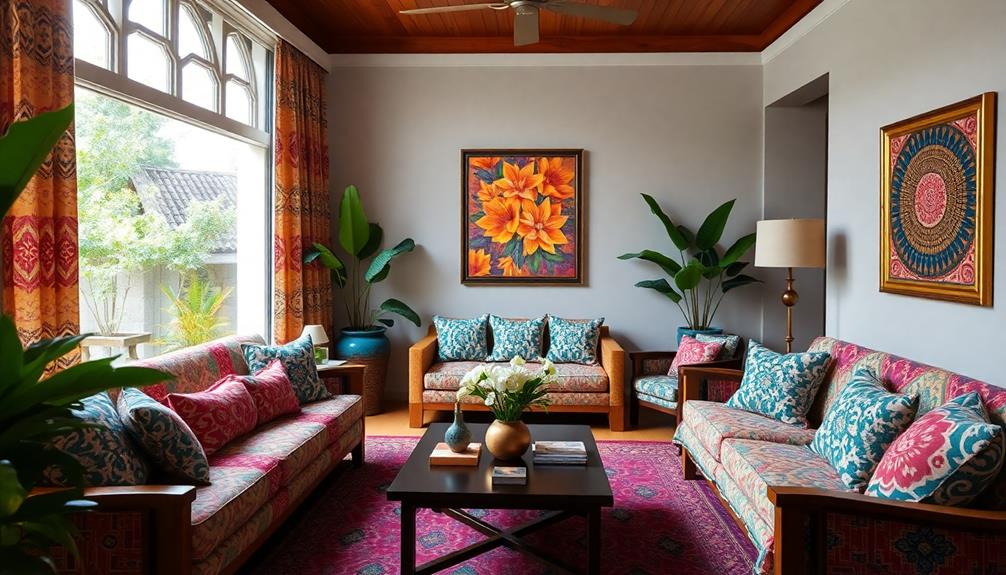
Incorporating batik patterns into modern interior design enriches spaces with deep cultural narratives and artistic expression. These patterns, steeped in cultural heritage, convey stories and meanings that resonate with the values of their regions. For example, the Parang motif symbolizes power, while the Kawung represents fertility. Each motif adds significant layers to your home decor, allowing you to share the rich narratives behind them.
The recognition of batik by UNESCO as a Masterpiece of Oral and Intangible Heritage of Humanity in 2009 reinforces its importance in contemporary design. By blending traditional craftsmanship with contemporary aesthetics, batik patterns become more than mere decoration; they serve as conversation starters that connect your living space to a broader cultural context.
| Motif | Meaning | Design Application |
|---|---|---|
| Parang | Symbolizes power | Accent walls |
| Kawung | Represents fertility | Upholstery fabrics |
| Mega Mendung | Signifies clouds | Curtains and drapes |
As you integrate batik into your home, you celebrate both its cultural significance and the artistic expression it brings, creating a space that feels both timeless and relevant.
Modern Applications of Batik

Batik offers versatile design applications that can transform your space with its unique patterns and textures.
You can easily integrate its cultural aesthetic into various styles, whether you're going for bohemian vibes or a sleek minimalist look.
Additionally, incorporating elements like traditional artistry can elevate the overall ambiance of your home.
Plus, incorporating batik elements adds a rich, tactile quality that enhances any interior.
Versatile Design Applications
With its vibrant colors and intricate designs, batik fabric offers a unique versatility that enhances modern interior design. You can incorporate batik patterns into various home decor elements, from curtains and tablecloths to throw pillows and wall art. This adaptability allows batik to complement a range of design styles, whether you lean towards bohemian, modern, or traditional aesthetics.
Additionally, the cultural significance of batik elevates its appeal, making it a thoughtful choice for those looking to celebrate the rich cultural heritage in their homes.
Using batik as a focal point can elevate your space, especially with wall-mounted batik panels that showcase rich textures while honoring cultural heritage. Designers love to integrate batik into upholstery and soft furnishings, creating personalized environments that reflect artistic expression. The diverse color palettes inherent in batik patterns contribute to a lively atmosphere in any room.
Moreover, the rise of eco-friendly practices makes batik an attractive option for environmentally conscious consumers. Traditional methods often utilize natural dyes and generate minimal waste, aligning with sustainable design principles.
Cultural Aesthetic Integration
Through the use of batik patterns, modern interior design embraces cultural aesthetics that resonate deeply with personal and regional heritage.
These intricate designs, rooted in Indonesian heritage, bring a unique flair to contemporary spaces, making them more than just decor. Incorporating batik into your home can create a sense of harmony with nature, as seen in traditional Indonesian style home decor, enhancing the overall ambiance.
Consider how batik can enhance your home:
- Unique designs that tell stories and convey symbolic meanings
- Vibrant colors that energize your environment without overwhelming it
- Craftsmanship reflecting traditional techniques that honor the artistry of the past
- Sustainable decor options that align with eco-conscious values
- Versatility that allows batik to fit seamlessly into various interior styles, from bohemian to minimalist
Unique Textural Elements
Incorporating batik into your interior design not only adds cultural depth but also introduces unique textural elements that elevate your space. Batik fabric brings a rich visual appeal with its intricate patterns and vibrant colors, making it a standout choice for home decor.
By using batik in upholstery and drapery, you can seamlessly integrate cultural heritage and artisanal craftsmanship into modern spaces. Consider exploring sustainable craftsmanship in Balinese furniture to complement your batik pieces, creating a harmonious blend of styles.
Consider adding batik throw pillows or wall art to create focal points that enhance the overall ambiance of your room. The versatility of batik allows it to blend effortlessly with various design styles, whether you lean toward bohemian vibes or contemporary aesthetics.
Each handmade piece guarantees that your interiors are distinct, setting them apart from mass-produced decor. Opting for batik means embracing unique textures and adding layers of depth and character to your home. By incorporating batik in modern home decor, you blend tradition with contemporary style, creating an aesthetic that’s both timeless and current. The intricate patterns and vibrant colors of batik textiles are versatile, allowing them to complement a variety of interior design themes, from minimalist to eclectic. Moreover, these handcrafted pieces often carry cultural significance, making your decor not only visually appealing but also rich in history.
As you explore ways to include this stunning fabric, you'll find that it not only beautifies your space but also tells a story of artistry and tradition. Immerse yourself in the world of batik, and let its charm transform your living environment.
Integrating Batik in Interiors

Integrating batik into your interiors can instantly elevate the aesthetic of your space. These vibrant textiles bring a unique cultural flair while celebrating traditional craftsmanship, similar to how traditional Indonesian housing reflects regional identity and heritage.
You can effortlessly blend batik with modern aesthetics, enhancing your home decor with bold, eye-catching designs.
Here are some ideas to get you started:
- Use batik textiles as statement upholstery on sofas or chairs to make a striking focal point.
- Incorporate batik cushions and throws for added texture and warmth in your living areas.
- Hang batik wall art or framed fabric pieces to tell a story and draw the eye.
- Mix batik with other design styles, like bohemian or contemporary, to create an eclectic vibe.
- Choose batik items that promote sustainable practices, supporting artisans and eco-friendly textiles.
With their unique motifs and vibrant colors, batik can transform neutral spaces while maintaining a sophisticated ambiance.
Future Trends in Batik Decor

As batik decor continues to gain traction in modern design, it's clear that a blend of tradition and innovation is shaping its future.
You'll likely see batik patterns becoming more prevalent in home textiles, from cushions to curtains, as designers explore innovative applications that enhance decor aesthetics. This resurgence is fueled by a growing appreciation for cultural heritage, with traditional motifs being reimagined to create unique, personalized spaces.
The incorporation of intricate fabrics, such as batik and ikat, reflects a desire for authenticity in design, much like how batik is celebrated in Indonesian Wedding Decor.
Sustainable design trends are also influencing the future of batik decor. Environmentally conscious consumers are drawn to pieces made with natural dyes and eco-friendly materials, promoting a sense of responsibility alongside style. As a result, batik isn't just a decorative choice; it's a statement of values.
Moreover, the rising interest in artisanal crafts supports local artisans, ensuring that traditional craftsmanship remains relevant in contemporary settings.
The versatility of batik patterns allows you to integrate them seamlessly across various design styles, from bohemian to minimalist. With these trends, batik decor is poised to remain a crucial part of modern interior design, celebrating both heritage and innovation in every home.
Frequently Asked Questions
Why Is Batik Declining?
Batik's declining due to mass-produced textiles offering cheaper options, fast fashion trends overshadowing traditional craftsmanship, and synthetic dyes diluting its authenticity. Economic struggles also limit artisans' ability to compete, causing appreciation for batik to fade.
Why Is Batik Popular?
You'll love batik's vibrant colors, intricate designs, and cultural stories, all while appreciating its versatility in decor. Its eco-friendly nature and modern reinterpretations make it a popular choice for creating unique, stylish interiors.
What Is the Basis of Modern Batik Design?
Modern batik design reinterprets traditional motifs with contemporary aesthetics. You'll find vibrant colors and intricate patterns in various decor elements, emphasizing sustainable practices and a blend of cultural heritage, appealing to your unique taste and storytelling.
What Do Batik Patterns Represent?
Batik patterns represent deep cultural meanings, embodying themes like power, protection, and prosperity. Each unique design tells a story, connecting you to heritage, traditions, and the environment while reflecting the values and narratives of its origins.
Conclusion
Incorporating batik patterns into your space can transform your home into a tapestry of tradition and trend. As you blend these vibrant visuals with modern decor, you create a mesmerizing canvas that celebrates culture and creativity. Embrace the bold beauty of batik, and watch as your interiors evolve into enchanting environments that spark conversation and admiration. With its rich history and contemporary charm, batik is set to become a staple in stylish spaces everywhere.

